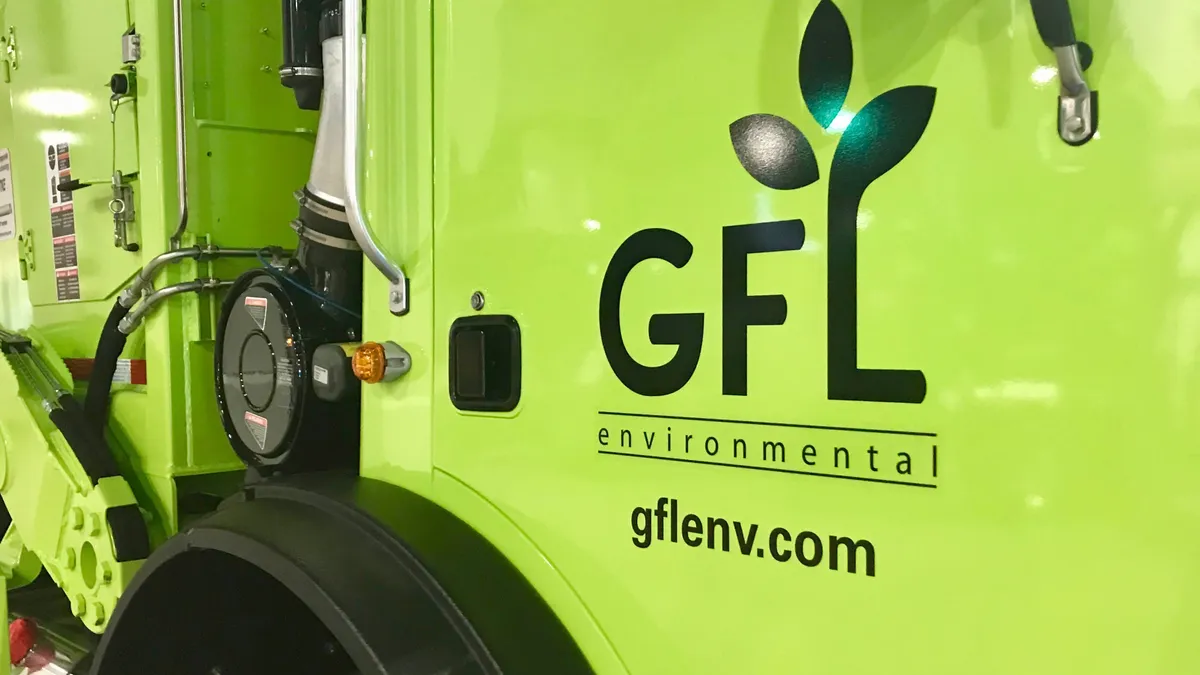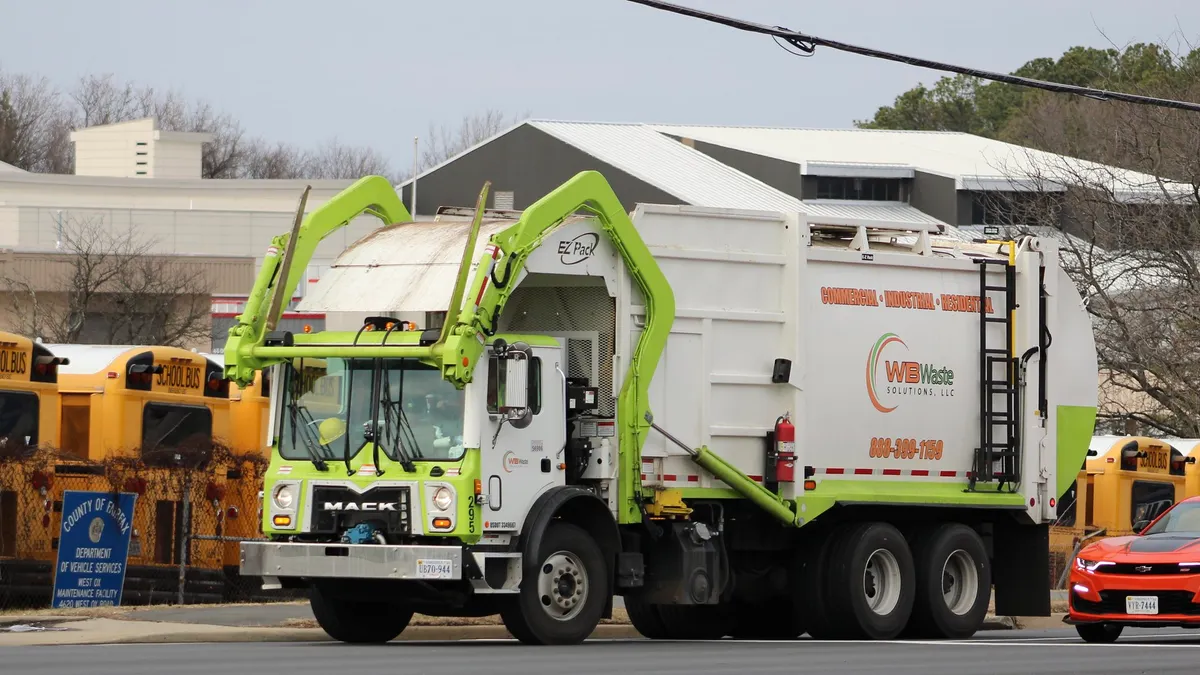GFL Environmental released its first detailed sustainability targets on Tuesday, with goals that are similar to those previously set by other publicly traded waste and recycling companies in North America.
According to the Canada-based company’s report, the goals were developed through a multiyear process that included a materiality assessment to identify the overlap between business and sustainability priorities. Topics such as “climate mitigation and resilience,” “responsible waste management” and “recycling and resource recovery” were identified as some of the top priorities for customers, employees and shareholders.
The company noted it has tripled in size since 2018, due to numerous acquisitions, and is still in the process of scaling up all aspects of formal environmental, social and governance reporting. The report says these short-term targets are the “first step towards setting future goals that would be accepted as science based targets from organizations such as the Science Based Targets initiative” and outlined a path to release its first Task Force on Climate-Related Financial Disclosures report by 2024.
Climate targets
Goal: Decrease total Scope 1 and Scope 2 GHG emissions 15% by 2030
Baseline: 3.94M metric tons of CO2 equivalent Scope 1 emissions and 33,000 in Scope 2 emissions in 2021
Like other large competitors, GFL is focused on reducing greenhouse gas emissions from its landfill and fleet operations. The company’s landfill portfolio has doubled to more than 90 in recent years, due to acquisitions, and those sites comprise 84% of its overall Scope 1 and Scope 2 emissions. GFL says it is focused on reducing fugitive landfill emissions through investments in renewable natural gas projects, as well as other efforts. The company notes it is also participating in tests of monitoring tools “using satellite, aircraft, drones, and fixed sensors to measure landfill gas emissions more accurately.” Additionally, the company says it is “committed to a year over year reduction in our non-GHG related air emissions.”
GFL’s fleet emissions comprise 14% of the overall total, followed by electricity consumption at 1%.
Goal: Increase recyclables recovered at GFL MRFs 40% by 2030
Baseline: 1.24M metric tons in 2021
GFL reports operating more than 30 MRFs, with fiber and plastic as its highest volume commodities. The company says it will make progress toward this target by increasing volumes collected and investing in new technology to expand its sorting capacity. GFL reported 15 AI-supported systems and 59 optical sorting units at its MRFs through the end of 2021. An upcoming facility in Pontiac, Michigan, with capacity for more than 110,000 metrics tons per year will further expand volumes.
Goal: Double beneficial use of biogas from landfills by 2030
Baseline: 5.73 million mmBTUs in 2021
In 2021, the company formed its GFL Renewables division to develop renewable natural gas projects at its landfills. It currently has 22 projects in development, with the first two set to come online by the end of 2023. Seven more sites are under negotiation or in development.
Goals: Make at least half of annual fleet replacement purchases compressed natural gas or alternative fuel vehicles and power 85% of the company’s U.S. CNG fleet with RNG by 2030
Baseline: 15.3% of fleet powered by CNG in 2021
GFL’s fleet emissions present another area for reduction, which is often the case for companies that go through periods of acquiring smaller operators whose fleets may be more diesel-heavy. Through the end of 2021, GFL had more than 10,000 solid and liquid waste trucks. The company outlines opportunities to power more of its CNG fleet with RNG from upcoming landfill projects, but also mentions electric or hydrogen vehicles as possibilities. GFL recently rolled out its first fully electric automated sideloader in British Columbia, Canada, and will soon be deploying at least 30 more to service a new contract in Gainesville, Florida.
Goal: 100% renewable electricity at company sites by 2030
Baseline: Not reported
GFL said it plans to reach this target “by using landfill gas to heat and power some of our facilities, partnering with renewable energy companies to install other forms of renewable energy (such as solar) at sites such as closed landfills, and purchasing electricity from market-based instruments.”
Additional targets
- Goal: Reduce Total Recordable Incident Rate to 2.0 incidents per 100 employees, or less, by 2030. The company’s baseline in 2021 was 3.9, down from 4.41 in 2020. GFL attributes this decline to its Safe for Life training program.
- Goal: Increase employee retention. The company did not report a specific target in this area, though it said its average employee tenure is 5.6 years. GFL also plans to do its first companywide employee engagement survey by 2025.
- Goal: Increase percentage of women in workforce annually. The company did not report a specific target in this area. In 2020, 15% of GFL’s workforce were identified as women. GFL notes that four of its five largest Eastern Canada hauling yards (by revenue) are run by women, part of broader career development efforts.
- Goal: Donate $1.5 million (Canadian) annually to communities through Full Circle Project. This customer-driven GFL initiative, which originated with Waste Industries (acquired in 2018), donated $1 million to community projects in 2021.
- Goal: Certify nature conservation or protection projects for 10 sites by 2025.
- Goal: Complete sustainability supply chain management audits for 100 of GFL’s “critical” tier one suppliers by 2025.











